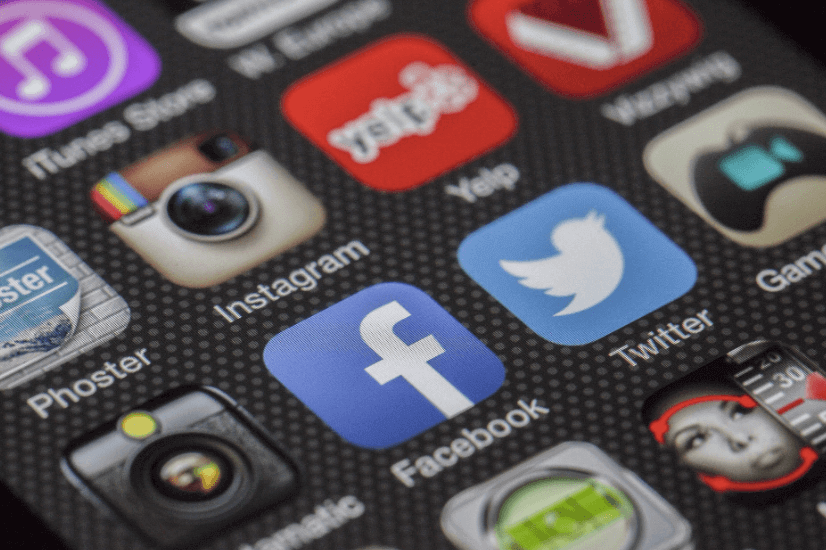When a giant like Apple makes moves, it affects everyone working in the digital space. For better or worse, ecommerce businesses and digital marketing agencies have to be aware of the decisions Apple makes and do what they can to adapt.
Back in June of 2020, Apple released a preview of iOS 14. While most people were focused on the user-facing features that would be updated, there were some changes that will have a major impact on the world of digital marketing. These changes will have an impact on everyone who operates in this space from the smallest ecommerce business to large social media companies like Facebook.
At this point, it is important to note that the situation is fluid and the overall effect of these changes is yet to be fully understood. With that said, we would like to explain the ways the update will affect advertising based on what we know now.
Implications of iOS 14
Among the many features being rolled out and promoted by Apple as a part of the update to iOS 14 is one that concerns user privacy and transparency. Starting early this year, apps will have to post an App Tracking Transparency (ATT) prompt if they collect user data in any way.
Before this update, apps could collect data using Apple’s Identifier for Advertisers (IDFA) without customer permission. If a person installed and used the app, that was all the permission you needed. Under the new privacy and transparency framework, a prompt will show up and users have to make a decision to opt-in or opt-out. We do not know how many users may choose to give permission to different apps and it should be expected that some apps will fare better than others for a variety of reasons.
As you might be able to imagine, this is going to affect the way advertising works on the internet. The most effective advertising platforms rely on the data they collect to target customers more effectively and to track the results of campaigns. With an as-yet-unknown number of iOS 14 users expected to opt-out of data tracking, there will be gaps in the information available to the apps and advertisers.
This policy change that is coming with iOS 14 is going to have an impact on the majority of businesses that operate online. Many of the effects are close to impossible to predict at this point, but to get an idea of how things will change, it might be useful to look at one of the biggest players in the online advertising space.

What does this mean for Facebook advertising?
Facebook has already expressed its displeasure as it concerns this new change coming with iOS 14. The social media platform – which has been vital to the growth of many small businesses and considers itself fully aligned with them, released this statement:
“The limits [iOS 14] places on advertising will harm the growth of small businesses and the free Internet. We believe that free, ad-supported businesses have been essential to the growth and vitality of the Internet, and that personalised ads and user privacy can coexist. We support proactive privacy measures and data transparency, but we don’t agree with Apple’s policy changes.”
Source: https://www.facebook.com/business/apple-ios-14-speak-up-for-small-business/impact-on-ads-marketing
Indeed, the success of Facebook advertising owes a lot to their ability to collect and leverage user data for the benefit of those who advertise there. With these abilities being limited on devices that have installed iOS 14, there is no doubt that it is going to affect Facebook’s advertising ecosystem.

Custom Audiences
Before iOS 14, simply installing the Facebook Pixel on your website allowed you to collect information about different user interactions that may occur on the website. That data could then be used to create custom audiences, track the user journey, evaluate the success of ad campaigns, and more.
Under the new framework, much of that data will no longer be passed between your website and Facebook if the user is on an iOS 14 device and opts-out. Ad targeting and personalization are two of the most important tools in a growing brand’s arsenal. Already, there are fears that without the ability to use the custom audiences feature, companies will lose their ability to reach certain target markets. Retargeting will be harder as website-based custom audiences will shrink significantly.
Part of the reason Facebook is able to glean valuable insights is due to the vast scale of data they are able to collect from Pixel tracking. With users expected to opt-out of data tracking, it will put a gap in that dataset. This means that not only are your website-based custom audiences likely to shrink, the accuracy of things like behavioral targeting and lookalike audiences will probably diminish. The algorithms used to support these features rely on the volumes of data the app can collect, and when a significant portion of the users opt-out, that will have an impact.
Tracking and Aggregated Event Management
Apple has set the limit of conversion events you can track and record to eight. If you want to optimize towards a new event, you will also need to wait 3 days until you’re able to use it (if it is not part of the predefined 8 events). This newly imposed event limit will also cause advertisers to lose the visibility of the conversion funnel and therefore, the ability to track the entire customer journey.
If a user opts-out of tracking, a brand’s highest priority event (ie. ‘purchase’) will still be recorded. However, you lose the life cycle of how the customer got there. Facebook is planning to fill in this gap through aggregated event management, a new feature which will ‘backfill’ user behavior based on confirmed actions. For example, if a purchase is recorded on Facebook, Facebook can then assume that the user also added an item to their cart and initiated checkout.
To adapt to this new reality, Facebook has made several policy changes in an attempt to maintain the quality of the advertising tools they offer. They are also making a range of recommendations to advertisers as a way to mitigate some of the effects of the new policy that will come into play. These will be covered in greater detail below.
Again, the exact level to which this will affect marketers remains to be seen. Additionally, large platforms like Facebook already have – and are likely to develop more – tools to mitigate some of the effects. Depending on how well they are able to adapt, the impact might be less severe than some are thinking.
Facebook has admitted that by its calculations, “small businesses could see a cut of over 60% of website sales from ads” and “50% drop in Audience Network publisher revenue.”
How Can We Mitigate?
You won’t find many in the digital marketing industry who are happy to see these new changes. It is going to add new challenges and it will take time to adapt. However, there are things that can be done right now to lessen the impact. We are choosing to view this change as an opportunity because we are confident that we have the skills and experience to adapt to this major change to the ecosystem.
1. Secure Domains
Firstly, it will be important to verify all your domains.
How: Go to your Facebook Business Settings and select Brand Safety. Then go to Domains and select “Add Domain.” This will confirm to Facebook that the websites you’re using are yours, and ensure conversion events are recorded.
2. Select Events
Next, brands will need to prioritize 8 events to track.
How: You can choose from the existing standard events, or set up custom conversions depending on your business needs. For e-commerce sites, this is generally going to look like this:
- 1. Purchase
- 2. Initiate Checkout
- 3. Add to Cart
- 4. View Content
- 5. Complete Registration (for a newsletter signup)
- 6. Search (probably the least used, but still useful in some cases)
- 7&8. open slots for custom conversions.

3. Prepare
Throughout this period it’s also going to be important to anticipate inevitable changes. There will be changes to reporting and conversions. However, most conversions will be taking place, whether they are trackable or not.
How: Google Analytics will become a great tool for tracking relationships between revenue and spend.
Pro tip: Every advertiser is facing the same thing so there’s no need to worry about competitive edges. We do not know yet even how many people will be opting out. Despite persistent media coverage around people’s discomfort with current data privacy rules, many people actively grant permission to sites to use cookies understanding the implications of this. Furthermore, Facebook and Instagram will include a pre-prompt explaining why people SHOULD opt-in. No one can really anticipate the number of people who will choose to opt-out. In other words: stay calm but expect to see some changes to reporting.
4. Adapt to Attribution Changes
Preparing also means expecting changes to attribution windows and updating automated rules if required. Attribution windows are yet another thing that will be changing with the arrival of iOS 14. Beginning on January 19th, the default attribution window will automatically change to a 7-day click and 1-day view.
How: If you’re an advertiser using 28-day attribution or automated rules (or both), you need to use Comparing Windows to see how conversions change when you view them through this 7-day window. This will make it easier to understand the impact this change will have on your reporting. Export older 28-day attribution window data, which will still be accessible through Ads Insights API. Don’t forget to update automated rules using a 28-day attribution window! There could be unexpected adjustments in spend when the 7-day window default goes into effect.
Pro tip: Best practice preparation in this case also includes Identifying campaign optimization strategies. Start mapping out the optimization strategies that will require testing against new performance levels. This might include bid types and amounts, audience definitions, or optimization events.
5. Utilize Conversions API
Facebook’s Conversions API is going to be crucial for any business with “Purchase” as its main conversion event.
How: This feature directly sends purchase data to Facebook. Therefore, it helps to measure customer actions through lead scores, user scores, and delayed values, allowing you to gain back some insight into the customer journey. The API can be set up either manually through a few guided steps. Depending on your site platform, you can also use a partner integration.
Pro tip: Conversions API + the Pixel require event deduplication. While Shopify does this automatically, advertisers using custom coded solutions will need to do this manually.
7. Invest in Content
Since brands cannot rely as heavily on their tracking and targeting, they will need to find other ways to get ahead of the curve. One thing we’re also going to see a lot of is businesses investing more in their content and content strategies.
How: There are a few avenues you can take for levelling up the quality and quantity of your content. For one, you could partner with a content supplier. More likely, you will probably want to hire content specialists internally or work with freelance writers, editors, videographers or photographers – depending on what your creative looks like.








